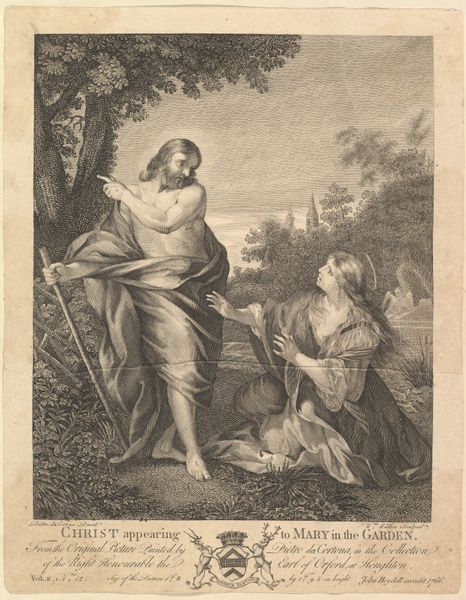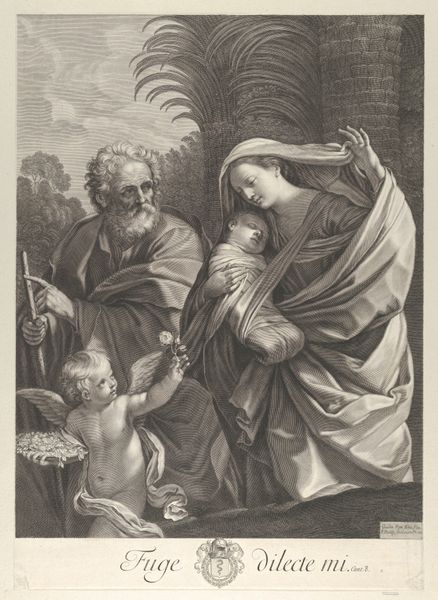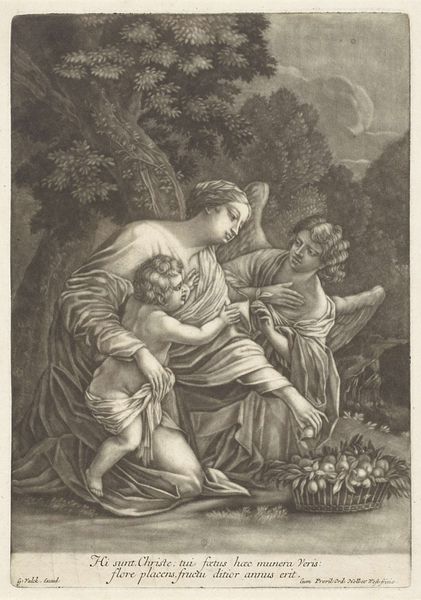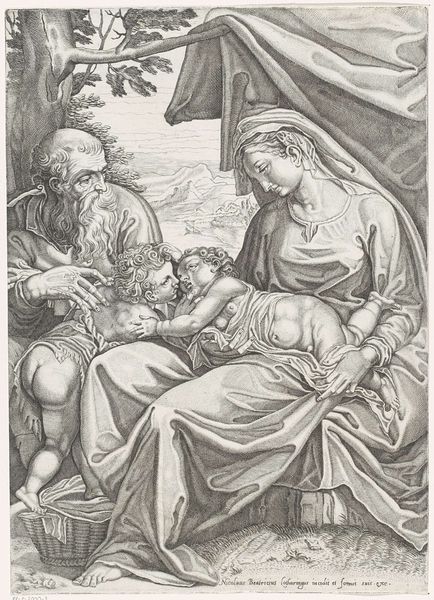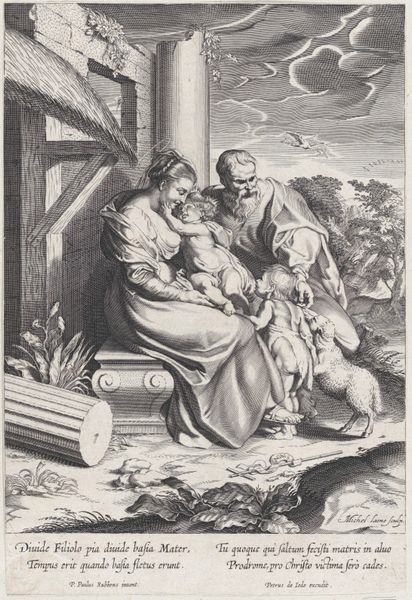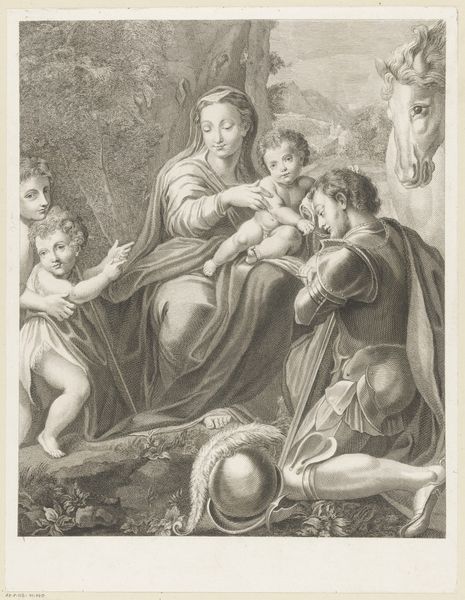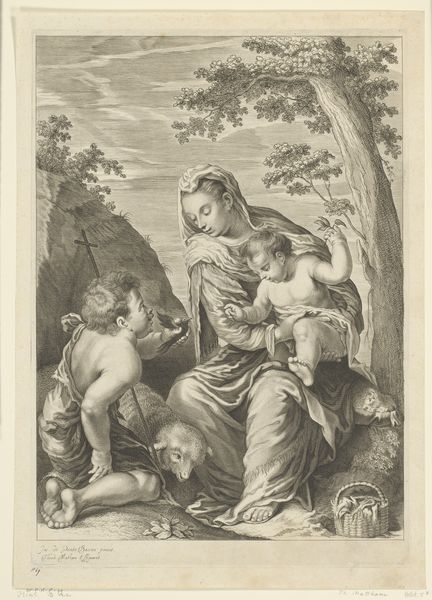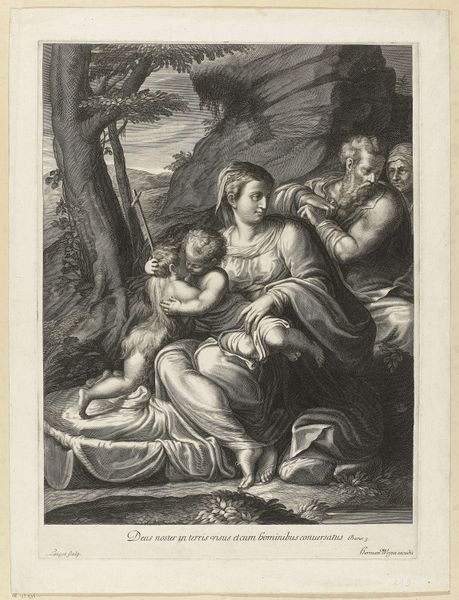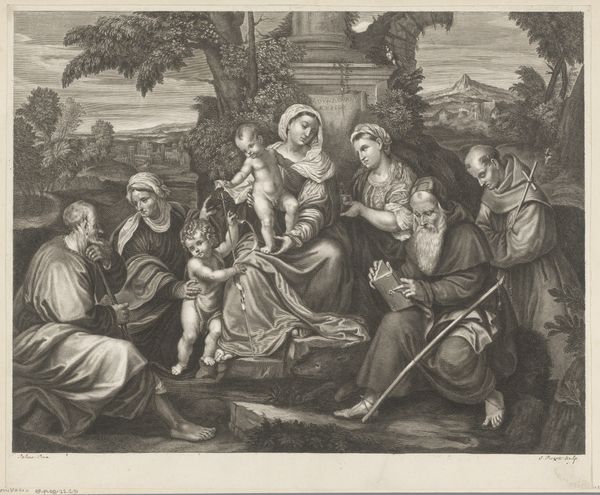
painting, oil-paint
#
portrait
#
painting
#
oil-paint
#
figuration
#
romanticism
#
history-painting
Dimensions: 87.6 x 68.6 cm
Copyright: Public Domain
Moritz Daniel Oppenheim, the first Jewish artist to gain European fame, painted "The Repudiation of Hagar" while living in Frankfurt. Here, Oppenheim portrays a scene from the Book of Genesis with Abraham, Hagar, and their son Ishmael. The painting reflects the complex intersection of religious identity, gender, and societal norms in 19th-century Europe. Hagar, the Egyptian handmaiden, becomes a surrogate to Abraham at Sarah’s bidding and bears him a son. Yet, she is ultimately cast out at Sarah's demand. Oppenheim captures the emotional weight of the scene: Hagar's expression, a mix of sorrow and resignation, contrasts with Abraham's conflicted stance. This highlights the vulnerability of Hagar, a woman of color in a patriarchal society, and explores the themes of marginalization. The painting invites us to reflect on the human cost of religious and social customs. It reminds us of the ongoing struggles for recognition and justice experienced by those who exist on the fringes of society.
Comments
stadelmuseum about 2 years ago
⋮
Oppenheim was, above all, known for his portraits of important Jewish personalities. Yet, he also did historical paintings, such as this scene from the Old Testament: at the behest of his wife Sarah, Abraham disowns the maid Hagar and their son Ishmael; Sarah, meanwhile, can be seen sitting on the right with their son Isaac. Oppenheim’s clear, contoured style of painting and the religious topic were inspired by the art of the “Nazarenes”, whom he had become acquainted with in Rome.
Join the conversation
Join millions of artists and users on Artera today and experience the ultimate creative platform.
